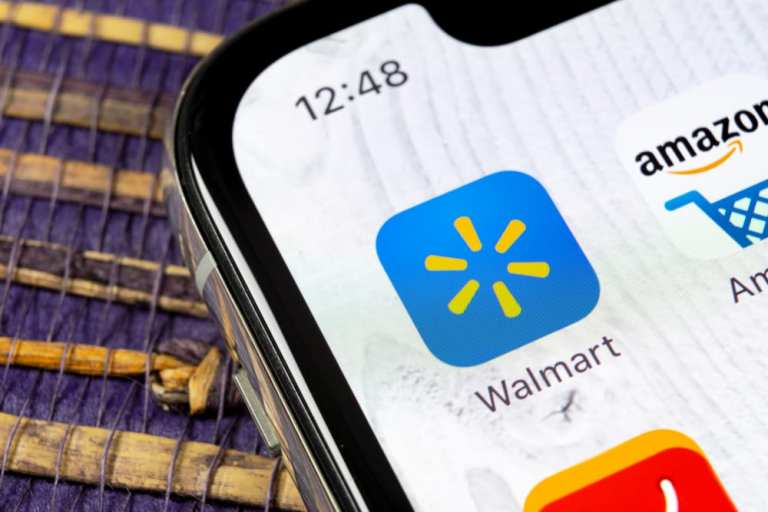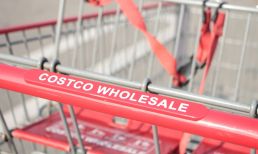Target’s earnings were so impressive this week that it almost seems like Walmart reported theirs long before its rival, but it was only the day before. Not that Walmart’s earnings weren’t impressive in their own right. To recap, Walmart’s Q2 results showed a U.S. comp-store sales increase of 9.3 percent over Q2 2019 and a 97 percent bounce in eCommerce. The digital performance comes on the heels of a 74 percent jump in Q1. Digital sales rose from 180 basis points in Q1 to 600 basis points in Q2.
One day later, Target announced that its comp-store sales grew 24.3 percent, a record for the company. Digital comparable sales grew 195 percent over 2019, accounting for 13.4 percent of the chain’s overall sales growth. Same-day services (order pickup and the company’s Shipt delivery service) grew 273 percent.
The comparison begs a question: Is Target doing something that Walmart is not? The answer might be found in the last line of the previous paragraph: Target has a shipping company. Walmart has just partnered with one (Instacart). If Shipt didn’t add a lot to Target’s Q2, the retailer wouldn’t have called it out – and the significance of that was lost on many analysts. Target is arguably more consumer-centric than Walmart right now. It aims to make its customers’ lives easier by pushing them toward high-value digital experiences and saving them time – which perfectly matches the PYMNTS Digital 3.0 FIT® Framework.
The framework, designed by PYMNTS CEO Karen Webster, is an acronym for Friction, Inertia and Time. It’s an outline for capitalizing on the digital shift that has pushed those astronomical increases from the two key brick-and-mortar powers. It’s also a benchmark by which retailers (or any other company) can measure their progress toward capturing the shift as it takes on permanent rather than trendy status in the retail industry.
The FIT framework is useful to examine as Walmart prepares to launch its Walmart+ subscription service as an Amazon Prime competitor. It was not mentioned in any definitive manner on the earnings call this week – it was just referred to as something that will be rolled out at some point. But when stacked up against the FIT framework, it’s easy to see why Walmart+ will be essential to its ability to keep pace with Amazon and to hold off new competition from Kroger and now Target.
Advertisement: Scroll to Continue
Let’s look first at Friction. Does Walmart make it as easy as possible for consumers to do business with them? The answer is a qualified yes. But before Instacart, the argument could be made that the company’s grocery footprint and delivery services couldn’t compete with Amazon. When Walmart+ rolls out, it will make the retailer more dependable as a frictionless enterprise by expanding its delivery footprint and tying consumers into a subscription.
Next look at Inertia. Is Walmart making the right moves to push customers toward the digital lane? Will life be easier in that lane? Unless Walmart+ is in the mix, it’s hard to say that the retailer is pushing customers toward the digital experience.
All of that adds up to saving the customer’s Time. With curbside pickup, contactless payments and its almost 5,000 locations, Walmart does save time. But it will make a big stride toward that last letter of the FIT framework with the rollout of Walmart+, which could be why the company has been so deliberate about introducing it.
Street Cred: Morgan Stanley Clamors for Walmart+
Wall Street is arguably more excited than Main Street when it comes to Walmart+. Morgan Stanley Retail Analyst Simeon Gutman says the subscription program could be a difference-maker on a high-level, long-term basis.
“I think the interesting part of Walmart to us is the potential for Walmart+,” Gutman told Yahoo! Finance’s The First Trade. “The reason why it’s intriguing is because I don’t think Walmart’s margin structure is going to be redefined anytime soon. And so the next catalyst, we think, is something that could sort of change the narrative – a membership program that puts them head-to-head with eCommerce giant Amazon. We think that could reshape the narrative for them. And we expect them to launch this program sometime in the back half of the year.”
The back half of the year has arrived. Some pundits put the launch of Walmart+ in late August. Others say the company will let Amazon set Prime Day in the U.S. before pulling the trigger on its subscription launch.
Stimulating Comments from McMillon
On its earnings call on Tuesday (Aug. 18), Walmart CEO Doug McMillon went out of his way to claim that Walmart saw a drop in spending as government stimulus funds ran out. By contrast, he also said that stimulus funds had a lot to do with the retailer’s successful Q2. Interestingly, on its last earnings call, Amazon did not stress stimulus payments as a significant driver of revenue, and neither did Target.
There’s reason to think McMillon was sending a warning to Congress as it continues to negotiate another stimulus package. A couple of reasons, actually. One: McMillon might not have a good handle on how Walmart shoppers used their stimulus funds based on transactional data. It would require qualitative surveys or limited quantitative customer research to get that insight, and he didn’t mention whether he had it. Two: The Census data doesn’t match McMillon’s claims.
According to the Census Bureau, about 85.5 percent of respondents to its Household Pulse Survey said they had received or expected someone in the household to receive an economic impact payment, or stimulus check. The majority said they used (or planned to use) most of it on household expenses.
“In households that spent their stimulus checks, respondents reported using the money for a variety of expenses, and many reported spending it on more than one thing: About 80 percent of these respondents reported using it on food, and 77.9 percent on rent, mortgage and/or utilities, including gas, electricity, cable, internet and cellphone,” the Census report said. “More than half (58.2 percent) of such respondents reported spending stimulus payments on household supplies and personal care products. About a fifth (20.5 percent) reported spending the money on clothing.”
Only 8.1 percent said they spent or would spend the stimulus on household goods like TVs, electronics, furniture and appliances, or on recreational goods like fitness equipment, toys and games. That matches up almost exactly with the categories that Target and Walmart said were fueling the consumer spending that drove their second quarters.
So 8.1 percent of American consumers drove two of its biggest retailers toward results that astounded Wall Street? Doesn’t make sense. Or is McMillon subtly telling Nancy Pelosi and Mitch McConnell that consumers need another round of stimulus checks to safeguard the economy against another precipitous drop in consumer spending?




